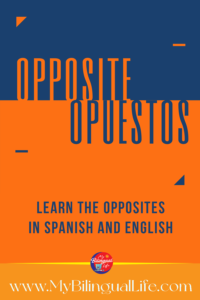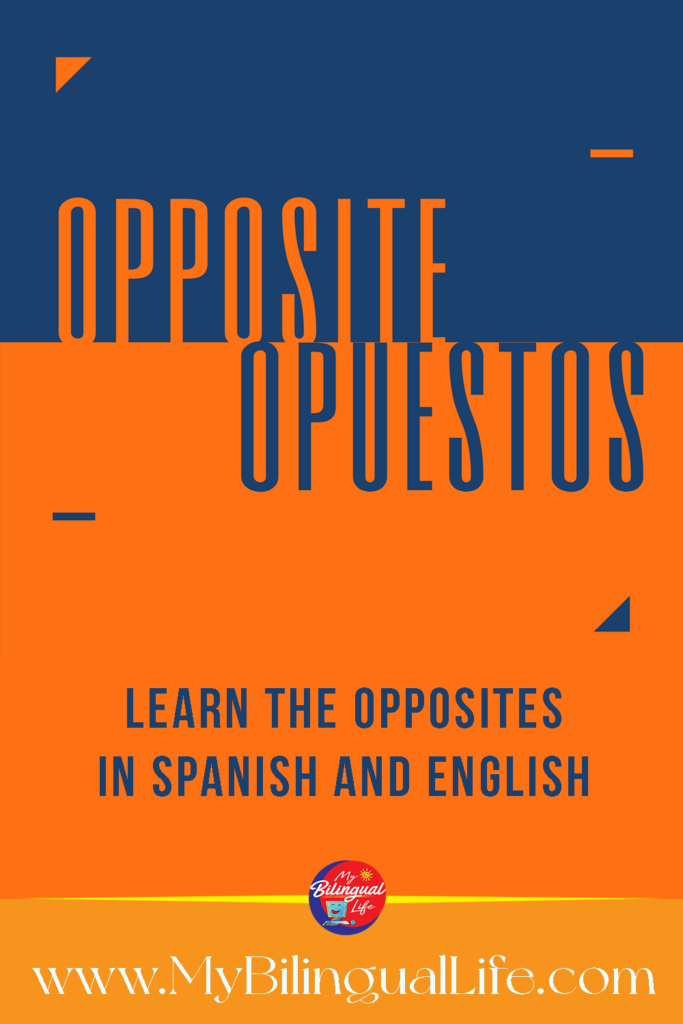Learning a new language can be a thrilling adventure, and one of the most engaging ways to delve into Spanish is by exploring opposite words or antonyms. Contrasting words that express opposing ideas not only enrich your vocabulary but also deepen your understanding of the language’s nuances. In this blog post, we will delve into the fascinating world of using opposite words to learn Spanish. Discover how this approach can be both fun and effective for language learners at all levels.

Why Opposite Words Matter
Before we jump into the practical aspects, let’s discuss why opposite words are essential in language learning. Antonyms provide context and variety to your vocabulary. By studying pairs of words that represent different ends of a spectrum, you gain a more comprehensive grasp of the language. Opposite words also help you express ideas more precisely, allowing you to convey different shades of meaning and create more engaging conversations.
Building Vocabulary with Opposite Words
- Start Simple: Begin with basic opposites. For example, learn “bueno” (good) and “malo” (bad), or “alto” (tall) and “bajo” (short). This foundation sets the stage for more complex vocabulary.
- Expand Horizons: Move beyond the elementary pairs and explore broader antonyms like “amor” (love) and “odio” (hate) or “rico” (rich) and “pobre” (poor). Understanding these opposites adds depth to your language skills.
- Contrasting Adjectives: Focus on adjectives, as they are particularly useful in conversations. Compare “feliz” (happy) and “triste” (sad), or “rápido” (fast) and “lento” (slow).
- Antonyms in Context: Pay attention to how opposite words are used in sentences. It provides valuable insights into the practical application of these words.
Practical Benefits of Learning Opposite Words
- Improved Comprehension: Learning opposite words enhances your listening and reading comprehension. When you understand the antonyms in a sentence, you can grasp the overall meaning more effectively.
- Expressing Nuance: Antonyms help you convey subtleties and nuances in your conversations. For instance, instead of just saying “frío” (cold), you can specify “caliente” (hot) or “templado” (warm).
- Enhanced Conversations: Engaging in meaningful discussions becomes more dynamic when you have a broad range of vocabulary to express opposing ideas and viewpoints.
- Cultural Insight: Antonyms can also offer insight into the culture and values of Spanish-speaking regions. For example, understanding “libertad” (freedom) and “opresión” (oppression) reveals societal perspectives.
Practical Exercises using Opposite Words
- Flashcards: Create flashcards with opposite word pairs and use them for regular practice. We have a great opposite word flashcards available on Teachers Pay Teachers.
- Antonym Games: Engage in language games that involve opposite words, like crossword puzzles or word searches.
- Dialogues and Conversations: Practice using opposite words in everyday dialogues. For example, discuss the weather using “caluroso” (hot) and “frío” (cold).
- Media and Literature: Read books, watch movies, or listen to music in Spanish, paying attention to opposite word usage.
Conclusion
Learning Spanish through opposite words is a dynamic and effective approach. By mastering antonyms, you not only expand your vocabulary but also gain a deeper appreciation for the language’s subtleties and cultural richness. Embrace this fun and engaging method as you journey toward Spanish fluency, and soon you’ll find yourself expressing ideas with precision and conversing effortlessly in this beautiful language. ¡Buena suerte! (Good luck!)
Resources at My Bilingual Life
We have a wide variety of language learning resources here on our website and in our Teachers Pay Teachers store.
This article will help you with some effective spanish learning strategies.
Check out this video with some of the opposite words in English and Spanish.





